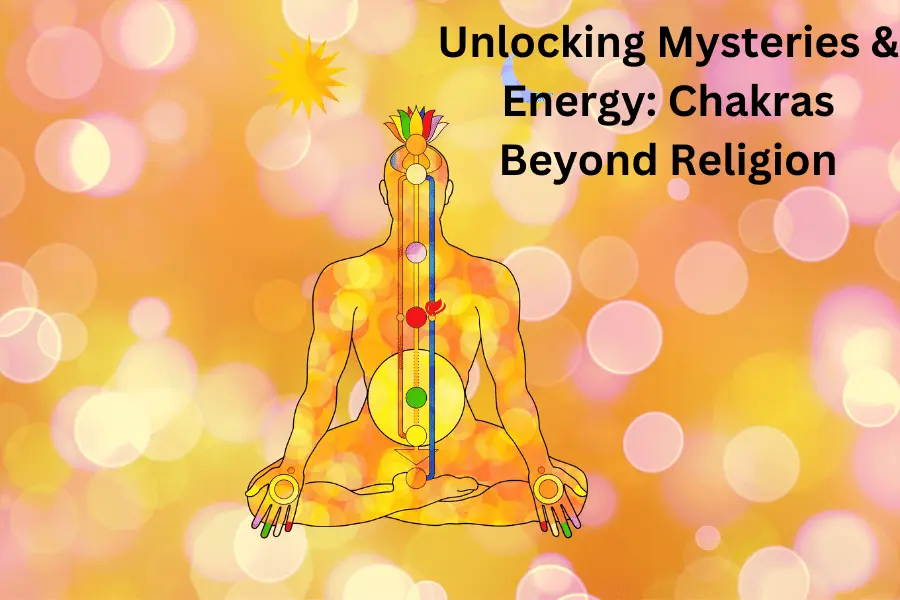The mysteries around the spiritual perspective over life have haunted human existence for centuries. Among the thousand possible answers for true human essence and how we interact with the world, there is one that we bring today.
Concept firstly conceived by Hindus and Buddhists, chakras are thought to be an energy center that goes along the spinal cord to all the physical body and, aligned with good practices, connects us with our spiritual life.
The Sanskrit word chakra (“wheel”) refers to the energy that flows throughout the human body. This energy is conceived of focal points that start at the base of the spine and go up to the top of the head.
Many are the mysteries around the chakra system and its application: how do they interfere in our physical body? Are they somehow linked to the Hindu religion? Do they go against what Christianity and the bible say?
Are Chakras Religious?
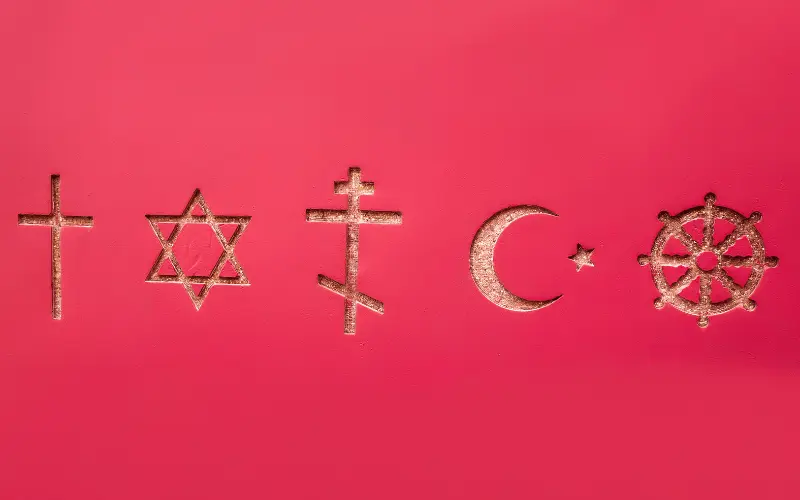
By itself, it is not a religious element. Primarily, the concept of chakra was found in Vedas — ancient Indian texts describing the yoga philosophy.
Through time, the concept of chakras was adopted by Hinduism, Buddhism and healing therapies as a means to characterize the energy center of the body.
The compilation of this knowledge is known as Tantra, which is the basis of the Western understanding of chakras.
Unraveling the Essence of Chakras
In order to have a better introduction to the concept of chakras, we must have a brief overview of the chakra system. To have a clearer understanding of chakras, we are also addressing common misconceptions about chakras and religion.
Since the 20th century, authors have associated each chakra with different elements — metals, astrological signs, foods, and crystals…. The main known correlation made is with body parts and colors of the rainbow.
Although the total number of chakras varies, seven main ones are the focal points for meditation over spiritual enlightenment.
- Muladhara (root chakra)
- Svadhisthana (sacral chakra)
- Manipura (navel chakra)
- Anahita (heart chakra)
- Vishuddha (throat chakra)
- Ajna (third eye chakra)
- Sahasrara (crown chakra)
Chakras in Various Spiritual Traditions
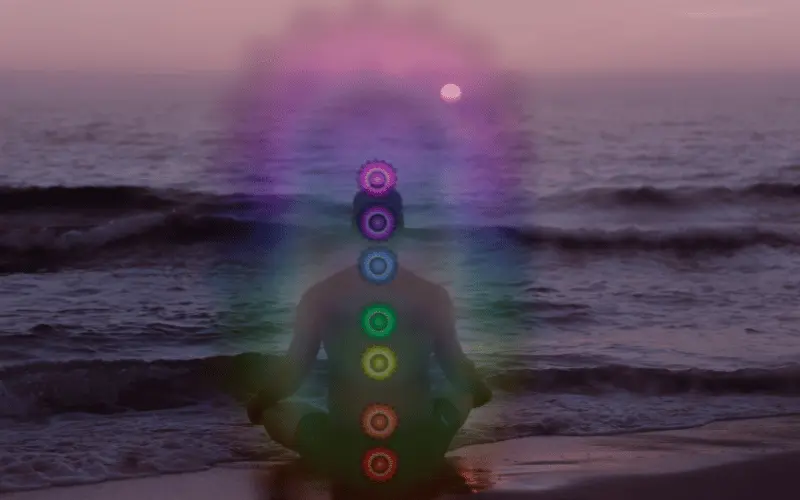
Exploring the historical roots of chakras in Eastern philosophy is an extensive study, and here I bring only an overview of it and the varieties that arose from it, ranging from Hindu to new ages.
The chakra has its historical origins in the East, specifically in Indian scriptures. According to this worldview, chakras correspond to vital energy points that align along the spine and correspond to different aspects of human existence.
Now, examining how chakras are perceived in Hinduism and Buddhism, we have some spiritual and yogic practices aimed at harmonizing the flow of energy in the body.
The Hindu cosmology recognizes seven chakra systems that influence physical, mental and spiritual well-being. In Tibetan Buddhism, the subtle body system includes energy centers that, when unblocked, heighten the states of consciousness.
Even though the chakra concept birthed through another culture and worldview, there are new age adaptations to it.
Among the vast comparing and contrasting Eastern and Western perspectives on energy centers, we have our key difference in interpretation. The traditional East vision understands energy as an essential component of the spiritual journey. Meanwhile, the Western tends to emphasize the psychological benefits of it, most time detaching it from its original cultural context.
After unraveling different perspectives over the subject, there is still a question that echoes: are energy & chakras spiritually safe for Christians?
Chakras and Christianity: A Delicate Balance

It’s no surprise if you feel interested in energy and the chakras even if a Christian. However, this feeling can provoke Christian guilt since this particular concept is not used in church — at least not in a literal way.
The thing that many Christians have against chakras comes from ignorance and lack of deepness. So here, I look forward to breaking down the prejudice and demonization done by many Christians over chakras without ignoring His warnings over hollow and deceptive philosophy (Colossians 2:8).
The Bible and Chakras: What Does it Say?
Recognizing the potential harmony between chakras and Christian beliefs may not be a straightforward task, since it requires an open-minded perspective. Analyzing biblical references that may relate to the concept of energy centers can enlighten how these two distinguish things are actually correlated.

However, we can agree that Christians must be discerning when discussing interpretations of scripture in relation to chakras. As per the Bible says, we must understand the word prior to its analysis (Acts 17:11).
So far, it’s clear that the teachings of chakra define the beginning of the kundalini spirit. It is defined as “the ancient description of the energy present within our bodies. […] stems from the base of the spine and winds its way up to the top of the head, and is often compared to a snake or a serpent.”
Considering the beginnings of a biblical story, it is easy to consider this a satanic concept. However, even though these energy channels are not mentioned, it’s impossible to ignore that God created us with pathways — meridians, nerves, blood… — that make us vessels of flowing life force, or vital energy.
Right in Genesis, we can see the concept of “breath of life”, responsible for giving life to all things due the vital life — or energy. So wouldn’t it be worthy of doubt to consider that, only maybe, these concepts are not as far as they seem to be?
Avoiding the “Throwing the Baby Out with the Bathwater” Phenomenon

You may ask yourself why am I highlighting the importance of open-minded exploration so far. The answer is simple: even though you feel reluctant about the Hindu and Buddhist traditions, don’t dismiss it early. You might be throwing away much wisdom.
Just because energy has been first studied in the East and just lately adapted into an Eastern mentality, it does not automatically mean that it isn’t real.
Looking to chakras and Christianity at the same time implies addressing concerns about integrating chakras with religious beliefs and having the capacity to discern the baby from the bathwater — or the wisdom from the worldview.
As God tells us, we must know our beliefs to not mistake them with deceptive philosophies. And encouraging a nuanced understanding of spirituality and energy will lead us to Christ in new and powerful ways by refining our worldview.
Unveiling the Science Behind Chakras
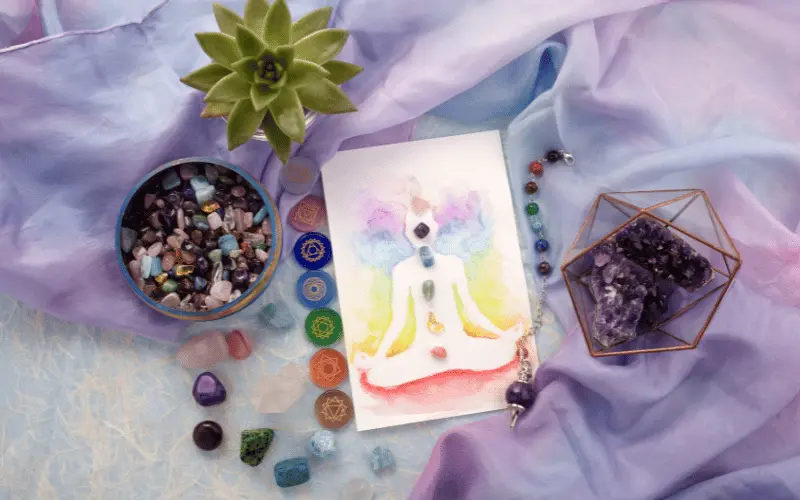
Continuing our journey, let’s discover a little more about how these points of energy work in practice and how they interfere in our well-being.
The Energy Dynamics of Chakras
Exploring the scientific basis of energy centers in the body opens up a gateway to understanding how our body, mind, and soul correlate.
It sounds complicated, but it isn’t: the modernized chakra system focuses on understanding how our energy influences mainly our nervous and endocrine systems and how we can improve our lives simply by changing some habits.
Discussing the physiological and psychological aspects of chakras allows us to better understand the concept of energy held in our subtle bodies.
Presenting research findings and studies on energy flow within the chakra system is uncommon, since there is not much research on the topic. However, some studies suggest the existence of chakras at the base of the spine.
This investigation turns out to be really interesting, since chakras is the teaching of opening up and balancing our beings, beginning at the root — exactly at the base of the spine.
Seven Chakras: Mapping the Energy Landscape
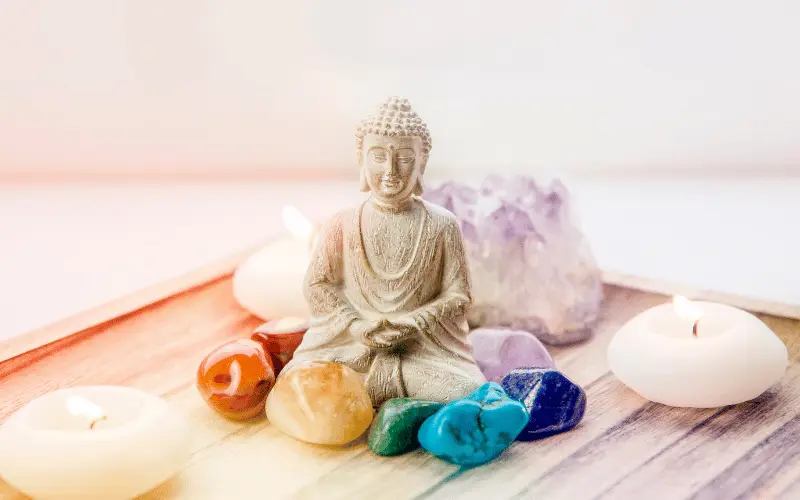
Introducing the seven chakras and their unique characteristics unveils a didactic and ancestral tapestry of spiritual and holistic traditions. Knowing that each chakra exists in both spiritual and physical bodies, we also understand that we depend on a balance to have a good life.
The energy created by energetic intersections may determine our well-being. Exploring the interconnectedness of the chakra system is a priority if we’re looking for the physical benefits of energy work in the body.
From the base to the top, the organs that represent the seven major chakras are:
- Adrenals – it’s about our survival sense;
- Ovaries/testes – it goes beyond sexuality or creativity, it also extends to fruitfulness;
- Pancreas – related to wisdom and power;
- Thymus – given its location, is not hard to assume that it’s related to love;
- Thyroid – not only communication, but the unity resulting from this process;
- Pineal – talks about revelation, sound mind;
- Pituitary – also sound mind, but refers to all levels of wisdom.
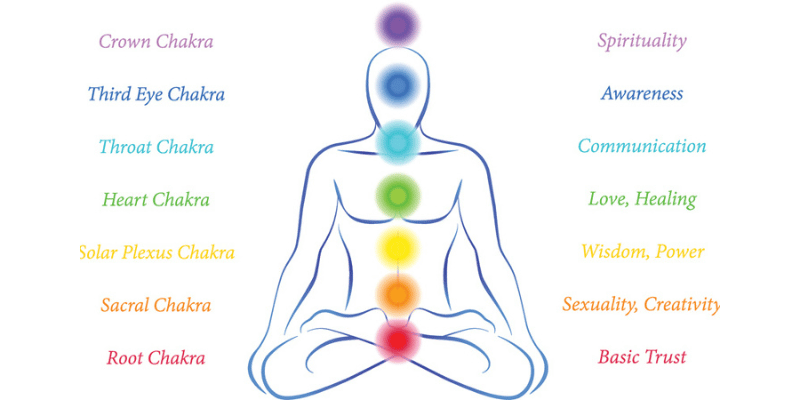
To illustrate what has been said so far, I’m utilizing visual aids, such as tables and diagrams, for better comprehension of your “new” tool for establishing vitality.
What Experts Say About Chakras
Let’s now dive into the perspectives and insights shared by scholars, practitioners, and researchers who bring a wealth of knowledge to the understanding of the ancient and intricate chakra system.

By tapping into the expertise of individuals well-versed in spiritual traditions, holistic healing, and scientific inquiry, we aim to unravel the mysteries surrounding chakras and gain valuable insights into their impact on our physical, emotional, and spiritual well-being.
Western Chakra System: Modern Perspectives
Traditionally, the chakras are a part of the Eastern spiritual practices, but thanks to the Western touch, it underwent thru some evolutions. Nowadays, we’ve new holistic processes into the Western Chakra System, which brings a clean look at historic know-how.
Examining how the concept of chakras has advanced in Western non secular practices unveils a dynamic transformation, wherein the mixing of chakras into contemporary wellness highlights their relevance in addressing the interconnected sides of human nicely-being.
From yoga studios to mindfulness, chakra has ended up critical and gives a framework for strength balancing. The modern-day perspectives cognizance, particularly on the psychological and emotional components of this idea.
Showcasing specialists’ views on the relevance of chakras in current society contributes to precious insights.
Through discussing the combination of chakras into modern wellbeing and holistic procedures, those experts provide perspectives on how the strength middle gadget can upgrade self-consciousness and emotional stability to a better usual wellbeing.
Debunking Myths: Seven Chakra System Unveiled
Addressing common misconceptions about the seven chakras may help you discern your opinions about it. These myths around it caused a lot of prejudice against it and made it be considered demonic.
By providing factual information and debunking myths surrounding each chakra, we’re going to dispel inaccuracies and induce critical thinking over stereotypes and popular beliefs.
Chakras are believed to be merely symbolic/esoteric concepts. However, there are lots of sources that prove otherwise, such as books of Eastern philosophy and holistic healing that emphasize the physical, emotional and spiritual scopes of it.
Another famous belief is that chakras are limited to the spiritual world, but it is not true since they directly affect our physical form due to its intrinsic correlation to our bodies.
Utilizing statistics and figures to enhance credibility to the debunking process reinforces the validity of the holistic practice, breaking the clichés spread all over the world.
Navigating the Spiritual Landscape
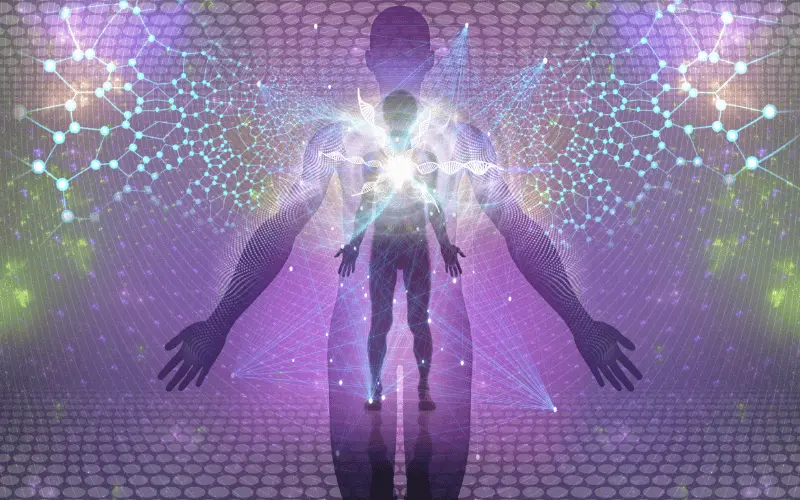
For free will to continue being a good thing, we need to know how to use it properly. By that, I propose we find the right balance between our beliefs and other religions.
Finding Harmony: What Your Chakras Can Teach You
Exploring the potential benefits of aligning and balancing chakras can offer Christians valuable insights into enhancing their spiritual and emotional well-being. Even though these concepts come from other worldviews, they can be adapted to complement Christian beliefs.
By properly developing the competencies of the seven chakras, it’s possible to be a compassionate, loving, and self-aware being.
Discussing practices for individuals of different spiritual backgrounds is fundamental if you’re looking to balance Hindu and Christian perspectives. According to the Bible, the virtues we must achieve are not so far from the ones cultivated into the Hindu practice.
We must be open to the new to become our better versions of ourselves. Being tolerant and non-judgmental is a step in the right direction. In fact, I risk affirming that developing your chakras could bring you a deeper union with God.
Further, presenting real-life stories and testimonials on the transformative power of chakra work can bridge the gap between Hindu and Christian perspectives. These testimonials can serve as inspiring examples. Think about accessing famous blogs and sources that also share their experiences on the topic.
Balancing Act: Integrating Chakras Into Your Spiritual Journey
Through a thoughtful, respectful and discernible approach, you can incorporate Hindu practices into your daily Christian life.
Straight forward, providing practical tips for incorporating chakra practices into daily life including prayer and meditation, aligning them with Christian teachings. A good source that can help you develop this ability is “The Chakra Bible”, by Patricia Mercier.
She discusses how to develop your chakra from a biblical perspective for a better relationship with God. At the same time, she maintains a solid foundation in Christianism, she’s encouraging readers to explore the spiritual landscape beyond religious boundaries.
Also, highlighting the importance of personal experience and self-discovery is crucial when exploring the integration of these two distinct religions. Even so you’re said to start at the root because the Hindu religion says so, you can still try to meditate and pray over other energy points of your body.
According to Psalm 46:10 (“Be still and know that I am God”), it is fully acceptable to have quiet contemplation and introspection as part of your exploration, since they are integral to Christian spirituality.
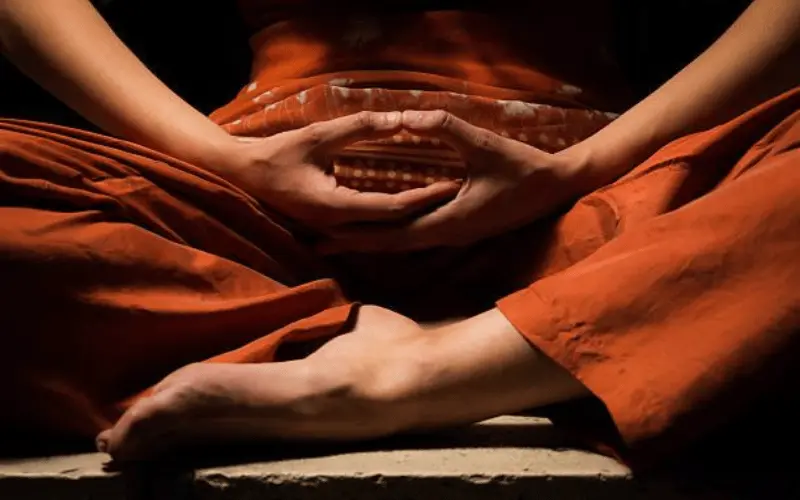
FAQ’s:
Q. Where did chakra balancing originate?
A. All the chakra systems originated in India through old texts called Vedas.
Q. What does science say about chakras?
A. There is no scientific evidence about chakras in the spiritual sense. But there are some studies and scientists that believe the primary ones located in the spine relate to the central nervous system.
Q. Do meditation and belief in Chakras conflict with Christianity?
A. Not necessarily if your heart and mind are in the right place. If there is harmony between the two of them, you’ll feel the presence of God while having positive practices and benefits of chakras.
Q. Chakras and their meaning for health?
A. Considering that each chakra is associated and found in a vital organ of our body, they are directly related to health.
Q. Which God belongs to which chakra?
A. According to the Hindu vision, each of the 7 chakras is associated with a deity.
- Root Chakra – Ganesh
- Sacral Chakra – Brahma
- Solar Plexus Chakra – Vishnu
- Heart Chakra – Rudra
- Throat Chakra – Isvara
- Third Eye Chakra – Shakti Hakini
- Crown Chakra – Shiva
Q. Why do people believe practicing the chakras are demonic?
A. Most of this conception is ignorance and prejudice over other religions and traditions. Some may justify it using the Bible, as it says to beware of “deceptive philosophies” (Colossians 2:8).

